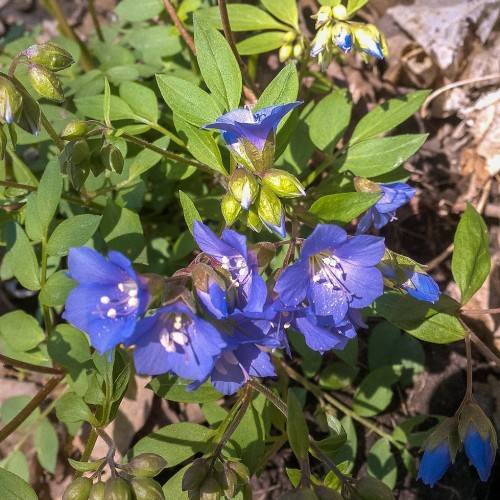
Jacob's ladder
Polemonium yezoense 'Kaleidoscope'
Cycle:
Herbaceous Perennial
Watering:
Average
Hardiness Zone:
4 - 8
Flowers:
Flowers
Sun:
Part shade
Leaf:
Yes
Growth Rate:
Low
Maintenance:
Low
Drought Tolerant:
Yes
Salt Tolerant:
Yes
Care Level:
Medium
watering
Jacob's ladder (Polemonium yezoense 'Kaleidoscope') likes to stay evenly moist, but never soggy. Water thoroughly when the top few inches of the soil have dried out, allowing the excess water to completely drain away. Check your soil weekly during hot, dry weather and water as necessary. During cooler weather, you will only need to water every 2 to 3 weeks.
sunlight
Jacob's ladder (Polemonium yezoense 'Kaleidoscope') does best in full sun or partial shade with at least 4 hours of direct sunlight per day. This greenhouse-grown plant is native to Japan and thrives in moderate ambient temperatures with cooler temperatures preferred in the winter. Sunlight plays a vital role in this plant's health; it needs plenty of it in order to promote flowering and overall plant growth. When given enough sunlight, Jacob's ladder will reach its maximum height of 1.5 to 2.5 ft. and put forth its clusters of arching stems with bell-shaped, bright pink blooms. To get the most out of your Jacob's ladder, plant it in well-draining soil in an area that gets full sun to part shade (at least 4 hours of sun each day), water it frequently, and fertilize twice a year.
pruning
Jacob's ladder should be pruned in early spring, before new growth appears. Removing any weak, diseased or dead branches will improve the plant's overall health. It is important to prune only the lower stems to keep the bush low as the plant produces flowers at the top. Use pruning shears to cut away any stems that are too long or thick. Be sure to leave a few buds on the stems so that the plant will have new growth to produce flowers. If stems are too tall, they can be tied back to a stake to keep them at a reasonable height. Prune only the stems that need to be cut back and keep any that are showing new growth.
